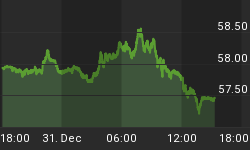Markets Love Central Bank Action

Anyone who follows the markets knows that action from central banks tends to impact risk-related behavior, often in a significant manner. With the European Central Bank (ECB) meeting Thursday, the International Monetary Fund (IMF) is calling for a more proactive monetary policy stance from the ECB. A March 4 post on IMF Direct made the following statements regarding inflation and ECB policy:
- Ultra low inflation--let us call it "lowflation"--can be problematic for the euro area as a whole and for financially stressed countries, where it implies higher real debt stocks and real interest rates, less relative price adjustment, and greater unemployment.
- Along with Japan's experience, which saw deflation worm itself into the system, this argues for a more pre-emptive approach by the ECB.
The conclusions and recommendations in the IMF post are below:
You can have too much of a good thing, including low inflation. Very low inflation may benefit important segments of the population, notably net savers. But in the current context of widespread indebtedness problems, it is working to the detriment of recovery in the euro area, especially in the more fragile countries, where it is thwarting efforts to reduce debt, regain competitiveness and tackle unemployment. The ECB must be sure that policies are equal to the tasks of reversing the downward drift in inflation and forestalling the risk of a slide into deflation. It should thus consider further cuts in the policy rate and, more importantly, look for ways to substantially increase its balance sheet, be it through targeted LTROs or quantitative easing (public and private asset purchases).
Evidence Has Continued To Improve
Regular readers know our thoroughly backtested approach to investing is based on staying aligned with hard evidence rather than investing based on forecasting or personal opinions. The chart below was originally presented in a February 7 article entitled Improving Profile More Favorable For Stocks. Since the chart was provided as bullish evidence, the S&P 500 has tacked on 76 points.

How Does The Same Chart Look Now?
The answer to the question above is "even better from a probability perspective". The S&P 500 has recaptured all the moving averages, cleared the previous closing high (see blue line), and the slopes of the moving averages have turned up, which indicates improving bullish conviction from investors.

Fed Has To See Weak Employment Data
The Fed has made it clear the hurdle to alter their tapering schedule is high. However, they cannot deny the recent weakness in employment-related data. The weak trend continued Wednesday. From The Wall Street Journal:
U.S. businesses added jobs at a very modest pace last month as factories added few new employees, according to a survey of private-sector hiring released Wednesday. Despite the tepid results--and a large downward revision to January's numbers--the data won't likely move analysts to change their forecast for the Friday's widely-watched U.S. employment report from the Labor Department. Tuesday's report said private-sector payrolls in the U.S. increased by 139,000 jobs in February, according to payroll processor Automatic Data Processing Inc. ADP -1.06% (ADP) and forecasting firm Moody's Analytics. That was below the consensus estimate of 160,000 new jobs predicted by economists surveyed by The Wall Street Journal. ADP also cut January's increase to 127,000 jobs from 175,000.
Investment Implications - Have Been And Still Are Long Stocks
During Monday's sell-off in stocks sparked by Mr. Putin, we wrote:
It is important that we remain flexible and make decisions based on hard evidence, rather than fear.
The same concept of making decisions based on hard evidence can be applied to all situations, bullish or bearish. Are the moving averages in the charts above a foolproof way to manage risk? No, which is why our market model uses numerous inputs from multiple time frames. However, the moving averages do add value and also do an excellent job of conveying the basic concepts. How did the same chart look before the August 2011 sell-off in equities?

The evidence in hand continues to support to hold our core positions in U.S. stocks (SPY) and technology stocks (QQQ). We have also established some smaller positions in U.S. large cap growth stocks (IVW), and gold miners (GDX). If the smaller stakes can earn their keep, we may increase our exposure to them. On the more defensive side, the market will determine how we manage our relatively small stake in bonds (TLT).
















